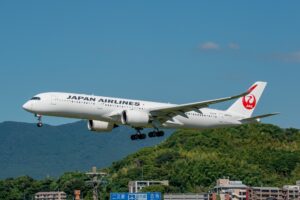
The Boeing 737-800, a relic from former regional carrier Silk Air, stands out in Singapore Airlines’ otherwise modern fleet. This aircraft, known for having the smallest seats in terms of legroom among the airline’s planes, remains in operation on select routes. Despite its limitations, the service onboard continues to uphold Singapore Airlines’ high standards.
Passengers on the 737-800 experience a 3-3 seating configuration, and while the seats offer a standard width of 17.7 inches (45 cm), the pitch is a mere 30 inches (76 cm) with a 5-inch (12.7 cm) recline. This gives it the unfortunate distinction of providing the least legroom in the fleet. Additionally, the business class seats on this model do not lie flat, a feature that is otherwise standard across the airline’s business class offerings.
Entertainment and Technology: A Step Back in Time
Unlike the newer models, the 737-800 lacks seat-back entertainment screens. Instead, passengers can access a subset of the KrisWorld Entertainment system via their personal devices. However, this requires personal headphones, which can be a setback for those who forget them. The crew does provide headphones for listening to one of the 12 available channels, reminiscent of older flying experiences.
Power outlets and USB-A ports are available under the seats, but they are shared between passengers on a two-between-three basis. Notably, there is no Wi-Fi available on this aircraft, marking a significant deviation from the connectivity options available on more modern planes.
Service and Dining: Consistent Excellence
Despite the aircraft’s shortcomings in entertainment and comfort, the service provided by the Singapore Airlines crew remains exemplary. Passengers receive attentive and efficient service, with crew members going out of their way to accommodate needs, such as finding space for carry-on luggage when overhead lockers are reserved for crew use.
The dining experience, while lacking a menu card, does not disappoint. Although some meal options may run out by the time the cart reaches the back of the plane, the available dishes, such as fish arrabbiata pasta and a barley, cucumber, and smoked salmon salad, are well-received. Complimentary wines, beers, and spirits are offered, along with individual tubs of ice cream for dessert.
Sustainability and Future Plans
Singapore Airlines has committed to achieving net zero carbon emissions by 2050. However, the older 737-800 models are not as fuel-efficient as newer aircraft, which is likely a factor in the airline’s decision to phase them out. By October, the airline plans to replace all 737-800 NGs with the more modern 737-Max 8. The new aircraft will feature entertainment screens and Wi-Fi, and business class seats will lie flat, aligning with the rest of the fleet.
Singapore Airlines flies these older models on routes from Singapore to Penang, Kuala Lumpur, and Kathmandu. The transition to newer aircraft is expected to enhance the passenger experience significantly.
Pricing and Overall Experience
For those flying from Sydney or Melbourne, economy class tickets on the 737-800 start at approximately $1600 for a return trip. While the service and food quality remain high, the overall experience on this particular aircraft falls short of what passengers have come to expect from Singapore Airlines.
In conclusion, the Boeing 737-800 offers a mixed experience. While the service and dining continue to reflect the airline’s commitment to quality, the lack of modern amenities and limited legroom make it less appealing. As Singapore Airlines transitions to newer aircraft, passengers can look forward to a more consistent and enhanced flying experience.






